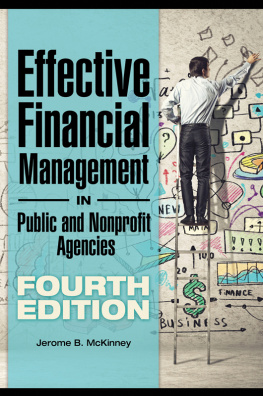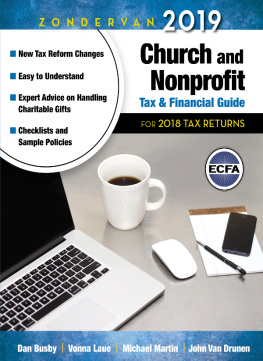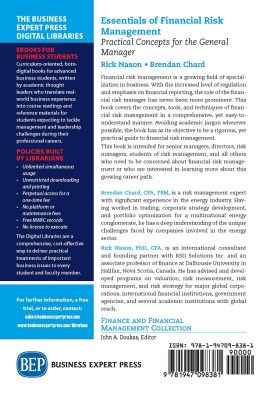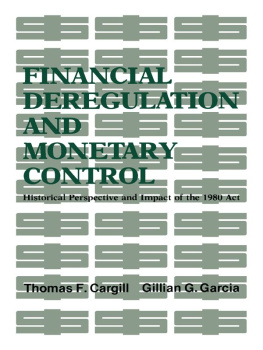Effective Financial Management in Public and Nonprofit Agencies
Effective Financial Management in Public and Nonprofit Agencies
Fourth Edition
Jerome B. McKinney

Contents
Public and other nonprofit financial management systems have been going through profound change during the past two decades. We are passing through a period in which the public is demanding more and better services while demonstrating an unwillingness to pay higher taxes or fees. Access to government and nonprofit sources of funding have been made more difficult since the Great Recession of 200809. Accordingly, public and private officials hold the view that public and other nonprofit agencies can and must find new ways to cut costs while improving efficiency, effectiveness, transparency, and accountability. This edition is an important means to achieve these goals.
Even more so than in the past, effective management of financial resources is critical to the success and survival of public and other nonprofit agencies. While the nonfinancial manager will not be expected to be an accountant/bookkeeper or an auditor, any lack of familiarity with the concepts of accounting and other financial processes will limit the managers ability to ask the critical questions and to effectively monitor and evaluate fiscal activities. This text is written to be understandable to those who are not experts but to those who are or may become managers.
Every chapter of this fourth edition is updated with the most recent developments, maintaining simplicity and practicality. Special emphasis is focused on sustainability as a unifying means to address a wide array of public and nonprofit fiscal management issues, especially the demand for greater transparency and accountability and the pursuit of the sweet spot in the triple bottom line (TBL) approach to sustainability. Attention is given to the Treadway Commission, or Committee on Sponsoring Organization (COSO), study on internal control, including its widely accepted recommendations aimed at maximizing the achievement of an organizations mission and goals. Next, recent developments to minimize organizations vulnerability to fraud, waste, and abuse (FWA), including the triangle versus the diamond approaches and cloud computing are examined.
Other important areas on which this new edition focuses attention include (1) the recent research on and changing approach to risk management; (2) the government performance and Results Act of 1993, discussion of which has been comprehensively rewritten in 2010, focusing attention on tighter congressional oversight and on greater public transparency and accountability; (3) break-even analysis, introducing a new approach for calculating the result and articulating its linkage and importance to margin of safety, allowing managers to better manage their budgets and resources; (4) ties together the fiscal side (budgeting, financing, and controlling) and the substantive management side (planning, programming, and evaluating) to facilitate the unimpeded flow of required information to the appropriate responsibility centers decision points in public and nonprofit agencies; (5) it shows how to think about resource needs and translate them into effective budgets; (6) it shows how to obtain and use financial advisory services; and (7) it incorporates the massive changes brought about the Governmental Accounting Standards Board (GASB) in statement number 34.
The author thanks students and practitioners who exchanged ideas and examples. Thanks go to Mary McKinney and my daughter Katie for their continued encouragement and to the memory of Melissian and Octavious McKinney. I also owe thanks to Anita Marchese for typing and editing and the Graduate School of Public and International Affairs of the University of Pittsburgh.
Copyright 2015 by Jerome B. McKinney
All rights reserved. No part of this publication may be reproduced, stored in a retrieval system, or transmitted, in any form or by any means, electronic, mechanical, photocopying, recording, or otherwise, except for the inclusion of brief quotations in a review, without prior permission in writing from the publisher.
Library of Congress Cataloging-in-Publication Data
McKinney, Jerome B.
Effective financial management in public and nonprofit agencies / Jerome B. McKinney. Fourth edition.
pages cm
Revised edition of the authors Effective financial management in public and nonprofit agencies, 3rd ed., published in 2004.
Includes bibliographical references.
ISBN 978-1-4408-3122-5 (hardback) ISBN 978-1-4408-3123-2 (e-book) 1. Finance, Public. 2. Nonprofit organizationsFinance. I. Title.
HJ197.M35 2015
658.15dc23 2014040021
ISBN: 978-1-4408-3122-5
EISBN: 978-1-4408-3123-2
19 18 17 16 15 1 2 3 4 5
This book is also available on the World Wide Web as an eBook.
Visit www.abc-clio.com for details.
Praeger
An Imprint of ABC-CLIO, LLC
ABC-CLIO, LLC
130 Cremona Drive, P.O. Box 1911
Santa Barbara, California 93116-1911
This book is printed on acid-free paper 
Manufactured in the United States of America
The pursuit of virtually every collective public purpose has financial implications. Undertakings that have no cost seldom bring many benefits. Financial management plays an indispensable role in the achievement of an organizations objectives. It is the fuel that gives life and substance to the engine of public administration. Financial management is the only activity that touches every employee in an organization. The new international economic order has increased competitiveness among every jurisdiction of the world, because each individual must now directly compete against others for goods and services. Inflation has been effectively controlled in the United States from 2004 to 2014. The new competitive environment, the rising cost of governmental programs, and citizens demands for less bureaucracy and more cost-effective delivery of goods and services are forcing public managers and others in not-for-profit organizations to make creative use of their scarce financial resources. This is happening at a time when taxpayers are demanding greater value creation for resources expended, showing an unwillingness to support increased expenditures on services. Ideally, public and not-for-profit organizations seek to minimize cost, maximize net revenue, and break even financially (revenues equal or exceed costs) in the delivery of goods and services.
Transparency and Accountability . In recent years, these terms have been popularized both in the United States and abroad to mean good, trustworthy, corruption-free, responsive organization in private, public, and other nonprofit organizations. Although transparency and accountability are sometimes used interchangeably, they are differentbut interrelated.
In government, transparency suggests that reliable, relevant, and timely information about the activities of government is desirable and available to the public. There is an expectation that governments will listen to citizens and interested stakeholders. A transparent public organization not only must have visibility and accessibility, but must also institutionalize a process that responds quickly to requests for information. Additionally, large amounts of information are published without the need to make a specific formal request. Such information is regularly published on organizational Internet sites or in user-friendly leaflets and reports. Also, transparent organizations that respond to large number of requests for information typically create positive benefits through what is sometimes called proactive or communication transparency efficiency. The need for disclosure creates the opportunity for better information organization. This results in reliable data gathering that enhances enhanced fact-based decision making and communication.
Next page









